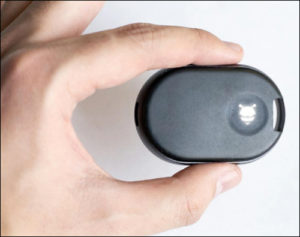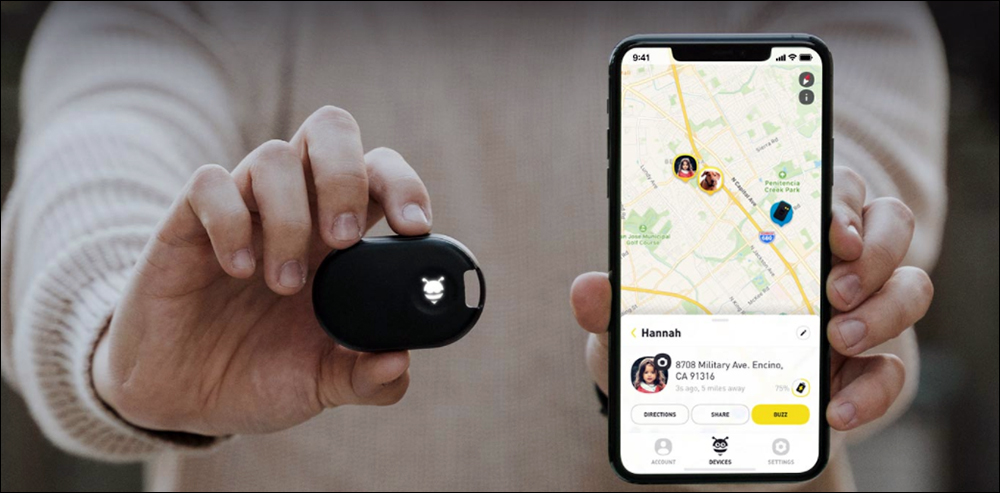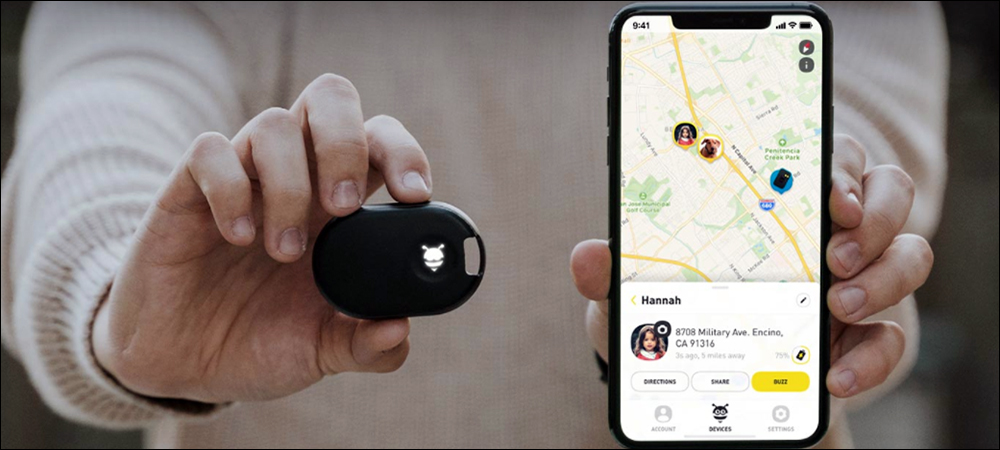Boeing engineers Nick Pearson-Franks and Daniel Daoura were friends and coworkers when they discovered a problem in need of a technology-based solution. Their subsequent partnership and innovation led to a company that is releasing a new LTE and Bluetooth-based tracker this year. Their Seattle area firm, known as Pebblebee, employs Internet of Things (IoT) connectivity and integration from another technology startup, Soracom. The solution enables individuals or businesses to find valued assets, whether they are within relatively close range or are unexpectedly far from a user and that person’s smartphone.

The Found tracker
Last year was especially difficult for Pebblebee’s team. Following the unexpected death of Pearson-Franks, as well as the pandemic’s economic impact, the company regrouped with Daoura at the helm. Now, in partnership with Soracom, the tracker—known as Found—is being adopted globally. A decade ago, Daoura and Pearson-Franks worked at Boeing on military aircraft communication systems. “We did cool work together and we were good friends,” Daoura recalls.
In 2012, Daoura arrived late to work one day because he couldn’t find his keys. He’d been playing hide and seek with his daughter, but she’d hidden the car keys and gone to school. Pearson-Franks could relate, as his son had once thrown away the television remote control after being told by his parents that “TV is bad for you.” After those incidents, Daoura experienced a panicky occurrence at the Washington State Fair, when his toddler daughter briefly went missing.
In 2013, the two engineers started developing a solution with Bluetooth technology. As long as a user’s smartphone had a Bluetooth connection to a dedicated tag attached to a valuable item or a pet, that individual could locate the object or animal if it went missing. They then began looking into a long-range, low-power option for tags that end up far from a phone. Pearson-Franks and Daoura launched a Kickstarter campaign while working at Boeing.
The two friends met with Soracom—a Seattle- and Tokyo-based company that provides tools and building blocks to accelerate IoT projects, cofounded by CTO Kenta Yasukawa, CEO Ken Tamagawa and COO Daichi Funato—at a Seattle IoT connectivity event. There, the two discussed their challenge: namely, that Bluetooth didn’t provide specific location data, especially at long range, whereas cellular systems consume battery power. Pebblebee described their efforts to use multiple technologies, recalls Jake Martin, Soracom’s brand and communications head. The solution that resulted incorporated GPS, Bluetooth and LTE Cat M, along with a low-power wide-area GSM connection.

Daniel Daoura
Yasukawa had a background at Ericsson and Amazon Web Services, with experience in IoT solutions. Although he found that the magic of the IoT happens in the cloud, he says there were few cloud-based solutions available to IoT users to help capture and manage the data. Soracom, founded in 2015, offers an IoT platform that accelerates IoT systems, Martin says. In Japan, the company already provides solutions for businesses, such as industrial and oil and gas solutions, with more than one million sensors tracking gas meters using Sigfox or LTE Cat M.
“We offer connectivity and also the technology that enables connections between the cloud back end and devices,” Yasukawa says, which includes integration services. “There is no one single technology that can serve every architecture,” he adds, so the company provides cellular, Sigfox and LoRaWAN networks, as well as LTE. Yasukawa formed both a working relationship and a friendship with the Pebblebee engineers. Together, they created a system by which Soracom’s cloud-based software layer enables a private secure network and the ability for a tracker to switch between Bluetooth and LTE connections, as needed.

Kenta Yasukawa
The Found solution consists of a tracker device about the size of a matchbook, with a rechargeable battery, Bluetooth and LTE radios, a cellular radio, GPS functionality and a processor. Users first purchase the number of trackers they require, then download the Pebblebee app on their iOS- or Android-based device. They can adjust the device’s settings with such details as how often it transmits via Bluetooth and LTE. The tracker is then attached to a device, such as a backpack, a bicycle or a dog’s collar.
As long as the tracker remains within range of the phone, it will send periodic Bluetooth signals that users can view in the app. If they are seeking that item, they can employ the app to ensure the object is within range, as well as use a Gegier counter mode to locate it. If the device moves beyond Bluetooth range, it can provide LTE connectivity, sending a GPS location or Polte‘s battery-saving location service over LTE.
If something unexpected occurs, such as a backpack not being where a user thought it was, or a pet leaving the geofence, the user can press a panic button to prompt the device to send a response with its location over to LTE. The device provides other features as well, such as sounding an audible buzzer when prompted to do so by the app. “It’s quite clever and takes advantage of what is available in connectivity,” Martin states. Soracom provides the IoT functionality with several unique features, Yasukawa adds, including a private secure network.

Jake Martin
The system employs extended discontinuous reception (eDRX) features, improving power efficiency by putting the device in dormant mode. With a virtual private network (VPN) gateway, units can directly and privately communicate with their back-end system without having to go through a public network or being exposed to the public Internet. In the power-saving mode, the tracker units can periodically check for update data packets, which are sent at pre-determined intervals. Before launching the product, Pebblbee worked with Soracom to lab-test the system. “We did a joint experiment,” Yasukawa says, “setting up a private network and sending messages to and receiving” from the device.
Pearson-Franks died in June 2020 in an all-terrain vehicle accident. During development, the Soracom and Pebblebee teams have worked closely enough that their interactions were personal in nature, including meeting for barbecues. That made the loss of Pearson-Franks devastating for both companies. “We had both a professional relationship and a personal friendship,” Yasukawa says. Daoura continued the company’s efforts to realize the friends’ goals. The firm used its downtime, both during the pandemic and after suffering the cofounder’s loss, to refine its solutions and make them more versatile, more secure with a private network, and lower in power for a long battery life.

The tracker remains connected at all times and can find lost goods, assets or pets as needed.
Pebblebee now has more than 30 issued patents on its products. Users can buy the Found device, manufactured by a third-party provider in Taiwan, with a one- or three-year subscription. “Our focus is consumer,” Daoura says, “but we’re getting a lot of interest from commercial enterprises, such as cold chain or freight management.” Polling of customers already using Found has indicated the devices are being utilized most frequently for tracking pets, cars, RVs, motorcycles and backpacks.
In the future, Pebblebee may offer a wristband version of the system that could be worn by small children. At present, though, Soracom’s objective is to democratize IoT technology, which Martin says “has been out there on the enterprise level for some time,” and to make it affordable and scalable. That means companies or individuals can use just a handful of devices or scale up to thousands. When it comes to aiding IoT innovators, he states, “It’s more than connectivity for us. It’s ‘How do we ensure someone’s IoT vision is successful?'”


